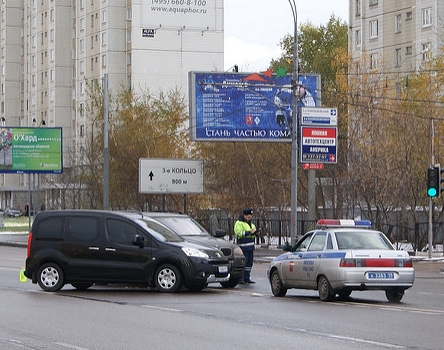A tragic car crash in Kalamazoo, Michigan over Labor Day Weekend has demonstrated the deadly consequences of driving over the speed limit. Five teenagers between the ages of 15 and 17 died in a fiery car crash around 1 AM on the morning of Saturday, September 2, 2017. They were traveling nearly 100 mph in a Dodge Charger when they slammed into a tree. A parked Kalamazoo police officer saw the car go speeding by and began following the car in order to slow it down. Upon rounding a corner however, he discovered that the car crashed and was being consumed by flames.
Speeding car accidents like this Kalamazoo car crash one are unfortunately not uncommon. Readers of The Michigan Law Firm, PLLC blog may remember a similar teenage speeding car crash that resulted in the deaths of 3 of the 5 teenagers involved, in Stony Creek Metro Park.
The National Highway Traffic Safety Administration (NHTSA) defines a speed related crash as one in which the driver “was charged with a speeding-related offense or if an officer indicated that racing, driving too fast for conditions, or exceeding the posted speed limit was a contributing factor in the crash.” In 2015, the most recent year for which data is available, 27% of all fatalities from automobile accidents in the country were due to speeding. In Michigan, speeding related fatalities are also about 27% of all fatalities from automobile accidents. Data from the NHTSA shows that drivers between the ages of 15 and 34 are most likely to speed, and males are more likely to speed than females. Also, weekends and night time are when the most speeding occurs. In states with harsh winters such as Michigan, ice and snow also increase the likelihood of speed related car crashes.
This heartbreaking car accident highlights the dangers of speeding. Whether it’s 1 mile per hour over the speed limit or 20, speeding is not only dangerous, but is also against the law. According to the Michigan Legislature, driving at a speed greater than the posted speed limit is known as a violation of a basic speed law (VBSL). Basic speeding laws are set in place to assure that vehicles will be able to stop within a clear distance of the car ahead if need be.
Michigan’s Posted Speeding Laws
- 25 miles per hour in business districts.
- 25 miles per hour in residential districts.
- 25 miles per hour within the boundaries of a public park.
- 55 miles per hour on truck-line and county highways.
- 55 miles per hour on gravel highways.
- 70 miles per hour on limited access freeways.
In the state of Michigan, speeding is considered a civil infraction, resulting in speeding tickets of up to $100. In some circumstances, driving over the speed limit may even be considered reckless driving, which may result in a fine of up to $500 and possibly jail time. More so, according to the Michigan Secretary of State, driving over the speed limit can also result in points being added to the driver's license. Different violations have different point values, and the points stay on the driver’s record for two years after the conviction date.
Points for Speed Related Infractions
- Reckless driving = 6 points
- Drag racing = 4 points
- Driving 16 mph over the speed limit or more = 4 points
- Careless driving = 3 points
- Driving 11-15 mph over the speed limit = 3 points
- Driving 10 mph or less over the speed limit = 2 points
Speeding is illegal and dangerous. Driving over the speed limit may result in points on the driver’s record, a suspended license, tickets, and even jail time. What's worse however is that speed related automobile accidents may lead to serious injury or death. Going 10 mph over the posted speed limit and potentially rear-ending a vehicle due being unable to slow down in time for a sudden red light, is not worth shaving 5 minutes off of a commute. Drivers should instead plan out their trip before they leave and should be prepared to leave ahead of their scheduled departure time to ensure a smooth, steady, and safe drive to their intended destination.
Speeding not only hurts your driving record, but it may also lead to serious injuries and death in the event of a speeding car crash. Driving over the speed limit, regardless of how much over the limit, is illegal. If you have been involved in a motor vehicle accident caused by a speeding driver, call The Michigan Law Firm, PLLC at 844.4MI.FIRM for a free consultation.














